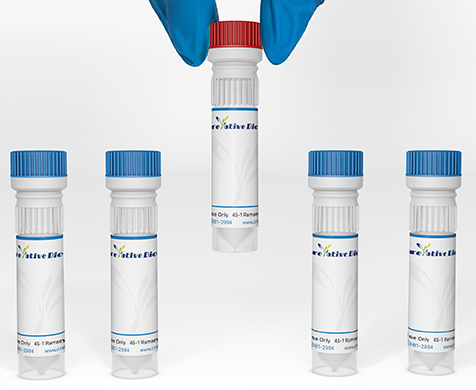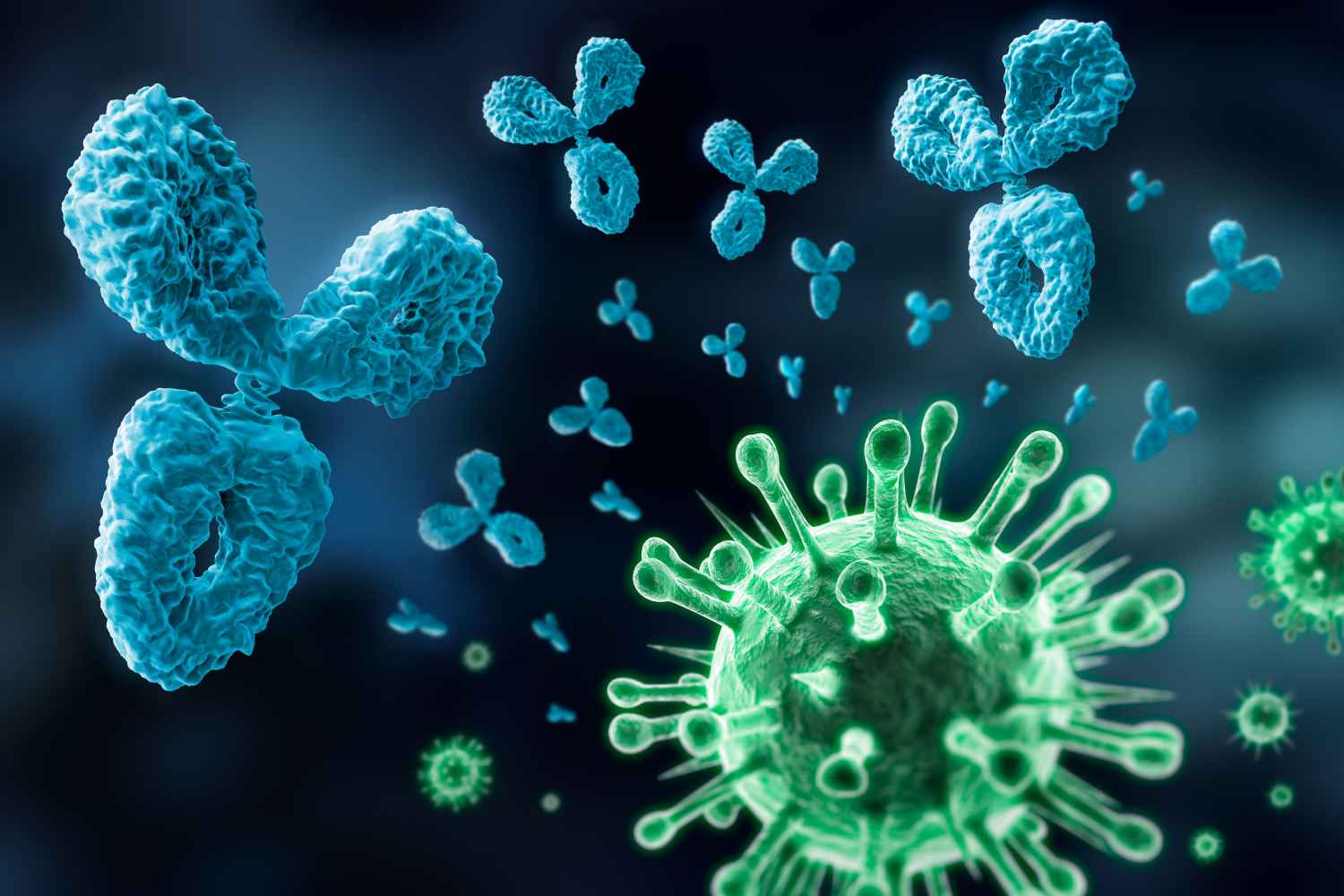Phospho-EPHA2 (Ser897)
This gene belongs to the ephrin receptor subfamily of the protein-tyrosine kinase family. EPH and EPH-related receptors have been implicated in mediating developmental events, particularly in the nervous system. Receptors in the EPH subfamily typically have a single kinase domain and an extracellular region containing a Cys-rich domain and 2 fibronectin type III repeats. The ephrin receptors are divided into 2 groups based on the similarity of their extracellular domain sequences and their affinities for binding ephrin-A and ephrin-B ligands. This gene encodes a protein that binds ephrin-A ligands. Mutations in this gene are the cause of certain genetically-related cataract disorders.[provided by RefSeq, May 2010]
Full Name
EPH Receptor A2
Function
Receptor tyrosine kinase which binds promiscuously membrane-bound ephrin-A family ligands residing on adjacent cells, leading to contact-dependent bidirectional signaling into neighboring cells. The signaling pathway downstream of the receptor is referred to as forward signaling while the signaling pathway downstream of the ephrin ligand is referred to as reverse signaling. Activated by the ligand ephrin-A1/EFNA1 regulates migration, integrin-mediated adhesion, proliferation and differentiation of cells. Regulates cell adhesion and differentiation through DSG1/desmoglein-1 and inhibition of the ERK1/ERK2 (MAPK3/MAPK1, respectively) signaling pathway. May also participate in UV radiation-induced apoptosis and have a ligand-independent stimulatory effect on chemotactic cell migration. During development, may function in distinctive aspects of pattern formation and subsequently in development of several fetal tissues. Involved for instance in angiogenesis, in early hindbrain development and epithelial proliferation and branching morphogenesis during mammary gland development. Engaged by the ligand ephrin-A5/EFNA5 may regulate lens fiber cells shape and interactions and be important for lens transparency development and maintenance. With ephrin-A2/EFNA2 may play a role in bone remodeling through regulation of osteoclastogenesis and osteoblastogenesis.
(Microbial infection) Acts as a receptor for hepatitis C virus (HCV) in hepatocytes and facilitates its cell entry. Mediates HCV entry by promoting the formation of the CD81-CLDN1 receptor complexes that are essential for HCV entry and by enhancing membrane fusion of cells expressing HCV envelope glycoproteins.
(Microbial infection) Acts as a receptor for hepatitis C virus (HCV) in hepatocytes and facilitates its cell entry. Mediates HCV entry by promoting the formation of the CD81-CLDN1 receptor complexes that are essential for HCV entry and by enhancing membrane fusion of cells expressing HCV envelope glycoproteins.
Biological Process
Activation of GTPase activity Source: UniProtKB
Axial mesoderm formation Source: Ensembl
Axon guidance Source: GO_Central
Blood vessel endothelial cell proliferation involved in sprouting angiogenesis Source: Ensembl
Bone remodeling Source: UniProtKB
Branching involved in mammary gland duct morphogenesis Source: UniProtKB
cAMP metabolic process Source: UniProtKB
Cell adhesion Source: UniProtKB-KW
Cell chemotaxis Source: UniProtKB
Cell migration Source: UniProtKB
Cell motility Source: UniProtKB
Defense response to Gram-positive bacterium Source: Ensembl
Ephrin receptor signaling pathway Source: UniProtKB
Inflammatory response Source: Ensembl
Intrinsic apoptotic signaling pathway in response to DNA damage Source: UniProtKB
Keratinocyte differentiation Source: UniProtKB
Lens fiber cell morphogenesis Source: UniProtKB
Mammary gland epithelial cell proliferation Source: UniProtKB
Multicellular organism development Source: ProtInc
Negative regulation of angiogenesis Source: Ensembl
Negative regulation of chemokine production Source: Ensembl
Negative regulation of lymphangiogenesis Source: Ensembl
Negative regulation of protein kinase B signaling Source: UniProtKB
Neural tube development Source: Ensembl
Notochord cell development Source: Ensembl
Notochord formation Source: Ensembl
Osteoblast differentiation Source: UniProtKB
Osteoclast differentiation Source: UniProtKB
Pericyte cell differentiation Source: Ensembl
Positive regulation of bicellular tight junction assembly Source: ARUK-UCL
Positive regulation of kinase activity Source: GO_Central
Positive regulation of protein localization to plasma membrane Source: UniProtKB
Post-anal tail morphogenesis Source: Ensembl
Protein kinase B signaling Source: UniProtKB
Protein localization to plasma membrane Source: ARUK-UCL
Regulation of angiogenesis Source: UniProtKB
Regulation of blood vessel endothelial cell migration Source: UniProtKB
Regulation of cell adhesion mediated by integrin Source: UniProtKB
Regulation of ERK1 and ERK2 cascade Source: UniProtKB
Regulation of lamellipodium assembly Source: UniProtKB
Response to growth factor Source: UniProtKB
Skeletal system development Source: Ensembl
Transmembrane receptor protein tyrosine kinase signaling pathway Source: GO_Central
Vasculogenesis Source: Ensembl
Axial mesoderm formation Source: Ensembl
Axon guidance Source: GO_Central
Blood vessel endothelial cell proliferation involved in sprouting angiogenesis Source: Ensembl
Bone remodeling Source: UniProtKB
Branching involved in mammary gland duct morphogenesis Source: UniProtKB
cAMP metabolic process Source: UniProtKB
Cell adhesion Source: UniProtKB-KW
Cell chemotaxis Source: UniProtKB
Cell migration Source: UniProtKB
Cell motility Source: UniProtKB
Defense response to Gram-positive bacterium Source: Ensembl
Ephrin receptor signaling pathway Source: UniProtKB
Inflammatory response Source: Ensembl
Intrinsic apoptotic signaling pathway in response to DNA damage Source: UniProtKB
Keratinocyte differentiation Source: UniProtKB
Lens fiber cell morphogenesis Source: UniProtKB
Mammary gland epithelial cell proliferation Source: UniProtKB
Multicellular organism development Source: ProtInc
Negative regulation of angiogenesis Source: Ensembl
Negative regulation of chemokine production Source: Ensembl
Negative regulation of lymphangiogenesis Source: Ensembl
Negative regulation of protein kinase B signaling Source: UniProtKB
Neural tube development Source: Ensembl
Notochord cell development Source: Ensembl
Notochord formation Source: Ensembl
Osteoblast differentiation Source: UniProtKB
Osteoclast differentiation Source: UniProtKB
Pericyte cell differentiation Source: Ensembl
Positive regulation of bicellular tight junction assembly Source: ARUK-UCL
Positive regulation of kinase activity Source: GO_Central
Positive regulation of protein localization to plasma membrane Source: UniProtKB
Post-anal tail morphogenesis Source: Ensembl
Protein kinase B signaling Source: UniProtKB
Protein localization to plasma membrane Source: ARUK-UCL
Regulation of angiogenesis Source: UniProtKB
Regulation of blood vessel endothelial cell migration Source: UniProtKB
Regulation of cell adhesion mediated by integrin Source: UniProtKB
Regulation of ERK1 and ERK2 cascade Source: UniProtKB
Regulation of lamellipodium assembly Source: UniProtKB
Response to growth factor Source: UniProtKB
Skeletal system development Source: Ensembl
Transmembrane receptor protein tyrosine kinase signaling pathway Source: GO_Central
Vasculogenesis Source: Ensembl
Cellular Location
Cell membrane; Ruffle membrane; Lamellipodium membrane; Focal adhesion. Present at regions of cell-cell contacts but also at the leading edge of migrating cells (PubMed:19573808, PubMed:20861311). Relocates from the plasma membrane to the cytoplasmic and perinuclear regions in cancer cells (PubMed:18794797).
Involvement in disease
Cataract 6, multiple types (CTRCT6):
An opacification of the crystalline lens of the eye that frequently results in visual impairment or blindness. Opacities vary in morphology, are often confined to a portion of the lens, and may be static or progressive. CTRCT6 includes posterior polar and age-related cortical cataracts, among others. Posterior polar cataract is a subcapsular opacity, usually disk-shaped, located at the back of the lens. Age-related cortical cataract is a developmental punctate opacity restricted to the cortex. The cataract is white or cerulean, increases in number with age, but rarely affects vision.
An opacification of the crystalline lens of the eye that frequently results in visual impairment or blindness. Opacities vary in morphology, are often confined to a portion of the lens, and may be static or progressive. CTRCT6 includes posterior polar and age-related cortical cataracts, among others. Posterior polar cataract is a subcapsular opacity, usually disk-shaped, located at the back of the lens. Age-related cortical cataract is a developmental punctate opacity restricted to the cortex. The cataract is white or cerulean, increases in number with age, but rarely affects vision.
Topology
Extracellular: 24-537
Helical: 538-558
Cytoplasmic: 559-976
Helical: 538-558
Cytoplasmic: 559-976
PTM
Autophosphorylates. Phosphorylated on tyrosine upon binding and activation by EFNA1. Phosphorylated residues Tyr-588 and Tyr-594 are required for binding VAV2 and VAV3 while phosphorylated residues Tyr-735 and Tyr-930 are required for binding PI3-kinase p85 subunit (PIK3R1, PIK3R2 or PIK3R3). These phosphorylated residues are critical for recruitment of VAV2 and VAV3 and PI3-kinase p85 subunit which transduce downstream signaling to activate RAC1 GTPase and cell migration. Dephosphorylation of Tyr-930 by PTPRF prevents the interaction of EPHA2 with NCK1. Phosphorylated at Ser-897 by PKB; serum-induced phosphorylation which targets EPHA2 to the cell leading edge and stimulates cell migration. Phosphorylation by PKB is inhibited by EFNA1-activated EPHA2 which regulates PKB activity via a reciprocal regulatory loop. Phosphorylated at Ser-897 in response to TNF by RPS6KA1 and RPS6KA3; RPS6KA-EPHA2 signaling pathway controls cell migration (PubMed:26158630). Phosphorylated at Ser-897 by PKA; blocks cell retraction induced by EPHA2 kinase activity (PubMed:27385333). Dephosphorylated by ACP1.
Ubiquitinated by CHIP/STUB1. Ubiquitination is regulated by the HSP90 chaperone and regulates the receptor stability and activity through proteasomal degradation. ANKS1A prevents ubiquitination and degradation (By similarity).
Ubiquitinated by CHIP/STUB1. Ubiquitination is regulated by the HSP90 chaperone and regulates the receptor stability and activity through proteasomal degradation. ANKS1A prevents ubiquitination and degradation (By similarity).
View more
Anti-Phospho-EPHA2 (Ser897) antibodies
+ Filters
 Loading...
Loading...
Target: Phospho-EPHA2 (Ser897)
Host: Rabbit
Antibody Isotype: IgG
Specificity: Human, Mouse, Rat
Clone: D9A1
Application*: WB, IP, P
More Infomation
Hot products 
-
Mouse Anti-BAD (Phospho-Ser136) Recombinant Antibody (CBYY-0138) (CBMAB-0139-YY)

-
Mouse Anti-BCL6 Recombinant Antibody (CBYY-0435) (CBMAB-0437-YY)

-
Mouse Anti-ATP1B1 Recombinant Antibody (E4) (CBMAB-0463-LY)

-
Mouse Anti-HTLV-1 gp46 Recombinant Antibody (CBMW-H1006) (CBMAB-V208-1154-FY)

-
Mouse Anti-AKR1B1 Antibody (V2-2449) (CBMAB-1001CQ)

-
Mouse Anti-CORO1A Recombinant Antibody (4G10) (V2LY-1206-LY806)

-
Mouse Anti-ARID1B Recombinant Antibody (KMN1) (CBMAB-A3546-YC)

-
Mouse Anti-CD46 Recombinant Antibody (CBFYC-0076) (CBMAB-C0085-FY)

-
Mouse Anti-ASH1L Monoclonal Antibody (ASH5H03) (CBMAB-1372-YC)

-
Mouse Anti-ASTN1 Recombinant Antibody (H-9) (CBMAB-1154-CN)

-
Mouse Anti-dsRNA Recombinant Antibody (2) (CBMAB-D1807-YC)

-
Mouse Anti-ADGRE2 Recombinant Antibody (V2-261270) (CBMAB-C0813-LY)

-
Mouse Anti-AAV-5 Recombinant Antibody (V2-503416) (CBMAB-V208-1402-FY)

-
Rabbit Anti-AP2M1 (Phosphorylated T156) Recombinant Antibody (D4F3) (PTM-CBMAB-0610LY)

-
Mouse Anti-CASP7 Recombinant Antibody (10-01-62) (CBMAB-C2005-LY)

-
Mouse Anti-CD24 Recombinant Antibody (HIS50) (CBMAB-C10123-LY)

-
Armenian hamster Anti-CD40 Recombinant Antibody (HM40-3) (CBMAB-C10365-LY)

-
Rabbit Anti-ABL1 (Phosphorylated Y185) Recombinant Antibody (V2-443434) (PTM-CBMAB-0001YC)

-
Mouse Anti-CDKL5 Recombinant Antibody (CBFYC-1629) (CBMAB-C1689-FY)

-
Mouse Anti-CD19 Recombinant Antibody (CBXC-1224) (CBMAB-C1491-CQ)

For Research Use Only. Not For Clinical Use.
(P): Predicted
* Abbreviations
- AActivation
- AGAgonist
- APApoptosis
- BBlocking
- BABioassay
- BIBioimaging
- CImmunohistochemistry-Frozen Sections
- CIChromatin Immunoprecipitation
- CTCytotoxicity
- CSCostimulation
- DDepletion
- DBDot Blot
- EELISA
- ECELISA(Cap)
- EDELISA(Det)
- ESELISpot
- EMElectron Microscopy
- FFlow Cytometry
- FNFunction Assay
- GSGel Supershift
- IInhibition
- IAEnzyme Immunoassay
- ICImmunocytochemistry
- IDImmunodiffusion
- IEImmunoelectrophoresis
- IFImmunofluorescence
- IHImmunohistochemistry
- IMImmunomicroscopy
- IOImmunoassay
- IPImmunoprecipitation
- ISIntracellular Staining for Flow Cytometry
- LALuminex Assay
- LFLateral Flow Immunoassay
- MMicroarray
- MCMass Cytometry/CyTOF
- MDMeDIP
- MSElectrophoretic Mobility Shift Assay
- NNeutralization
- PImmunohistologyp-Paraffin Sections
- PAPeptide Array
- PEPeptide ELISA
- PLProximity Ligation Assay
- RRadioimmunoassay
- SStimulation
- SESandwich ELISA
- SHIn situ hybridization
- TCTissue Culture
- WBWestern Blot

Online Inquiry





